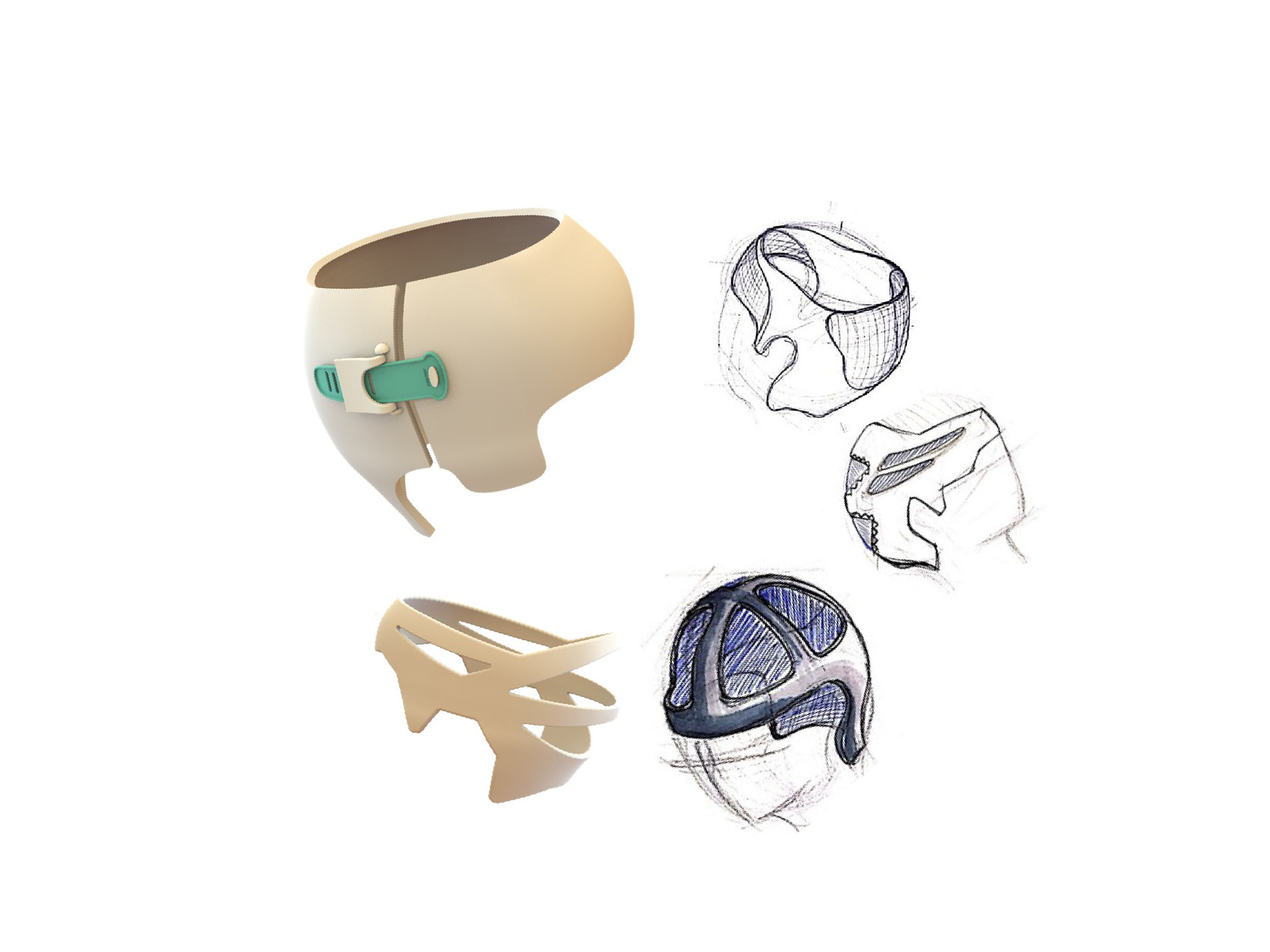Craft Engagement for
Environmental Sustainability
Craft Connected | craft-based service
Problem
The growing understanding of the seriousness of environmental deterioration has made us aware of the need to rethink our attitudes and reframe our approach to dealing with their root causes. There is a huge necessity for improvements in creating intuitive awareness and knowledge about our ecological responsibilities and the consciousness of our relationship to the environment.
Supervisor: Christopher Hethrington
MASTER OF DESIGN THESIS
EMILY CARR UNIVERSITY OF ART+DESIGN | 2018
Research Question
How can craft practices support awareness and action towards the natural environment?
Areas & Contexts of the Research
This research aims to incorporate cultural and traditional practices in order to develop social engagement with environmental sustainability. It looks at sustainability from the point of view of nature and the materiality of the craft world. Craft and cultural rituals are utilized as the means of engagement in developing tangible practices that lead to nudging consciousness and perception towards sustainability. It is also an emergent community project supporting larger social and environmental movements. Specifically, it leverages social engagement, craft and design in an effort to create social innovation. The social engagements address themselves to sustainability by building greater awareness and compassion for nature.
Craft draws a relationship between
nature, culture, and sustainability
nature, culture, and sustainability
1. Social Innovation & Craft
“Social innovation is a process of change emerging from the creative re-combination of existing assets.” (Manzini, 2014, p.57). By unlocking the roots and histories of traditional crafts in any given culture, and then tapping into the creative possibilities of how they can be recombined and reframed, a path to social innovation can be etched by applying the results to contemporary issues such as sustainability.
“As environmental issues move into the mainstream, a rising tide of concern presents an opportunity for the crafts movement to renew its engagement with social, political and philosophical issues…”
(Hughes, 2011)
2. Sustainability & Craft
A craft-based service brings in effective and particular advantages in designing services of sustainability and social innovation. Crafts are rooted in the social, natural, and cultural components of a society. The remarkable aspect of them is locality which opens up fascinating possibilities that address sustainability. Materials, methods of making and the meaning in a craft artwork are shaped based on climactic attributes and cultural context of their origin. Arts and crafts movements are less industrial and more about natural materials. According to Bofylatos (2017) craft can substitute for the huge industrial production that plays an essential role in modernity. He believes that changing mass production to craft production solves environmental problems that are caused by extracting raw materials, the pollution of manufacturing and the massive waste of disposal. (p.226)
3. Cultural Ritual & Craft
The incorporation of cultural rituals in designing the service of this research, creates an inviting and familiar atmosphere which makes the new engagements tangible and understandable for the participants. The Ritual Design lab at Stanford University, believes “Rituals have a special power to bring people together and give them a sense of purpose, values, and meaning. Ritual can provide the user with both the story and purpose necessary to make behavior change work.” (Ozenc, 2016)
By engaging in celebrating a cultural ritual, people feel that they are part of a bigger movement. The cultural rituals and traditional practices bring various groups of people together with common cultural purposes and the sense of belonging to their community.
shifting from a passive consumer
to an active user
Research application & outcomes
I realized, through my research, that I would need to develop some form of social innovation service in order to connect people with nature. The developed service is craft-based and I’ve called it Craft Connected. This is a service that involves people working and making with the craft community. This service attempts to open conversations about the natural environment through the acts of doing and making.
Workshop User journey
Craft Connected - Service Blueprint
Craft-Connected Characteristics
1. Life-cycle thinking
“Ecodesign considers environmental impacts during the whole product life cycle, from extraction of raw materials, to product manufacture, to product use and finally to treatment at end-of-life.” (Chick & Micklethwaite, 2011, p. 107). In this service, participants are part of all phases of producing and designing an environmentally attuned artifact. Users will get a sense of understanding of all phases and life cycle of the product: its origin, each material’s characteristics, how it is made, its usability, and how to dispose of it.
“The ways in which we think about our material culture, conceive it, produce it, use it and dispose of it are fundamentally connected to matters of environmental care…”
(Walker, 2014, p.119)
2. Durability and values
Hughes (2011) states that “Durable Design is an approach that seeks to prevent redundancy not through mere physical durability that has proven ineffective, but by designing objects whose lives are prolonged because people become emotionally attached to them. Craft, with its inbuilt material, process and personal narratives and unique objects have a powerful resonance with this concept” (p.16).
Creating personalized designs is an addition that brings people into this practice. Making with other people in a group to celebrate cultural heritage also motivates people to participate and create objects that carry the memories and stories of their experience.
3. Experiential learning
This is a collaborative practice; people make with crafts artists. The participants make under supervision of craft artist. They learn to make in an experiential process of education. They do not need to have any special skill. What they learn is very simple and easy to implement.
In the process of craft-based practices, participants stand in role of a maker; not to become a maker, but they observe the materiality of natural world from the lens of craft. This occasion makes users more receptive to achieving the desirable knowledge through making rather than the usual ways of learning. The focus is on the freedom of exploring materials and hands-on making. As according to Faud-luke (2009) this process is about the evolution of the customer to become a person who creates.
“…the world of ‘doing and making’, is prior to understanding.”
(Mäkelä, 2006, p.3)
4. Tangible: Tacit knowledge
In this service, the participant will be informed about who manufactures and ships the goods and materials and how, who distributes the products, the reasons behind the methods and process of making, and how their participation in this process is beneficial for themselves and their society. In other words, making in craft goes beyond process. Touching materials and involvement in the process of making makes understanding all the concepts tangible for them.
Fry emphasizes that (1994) “the qualification of craft practice is neither predicated upon established hand working, machine-based skills nor new methods which employ advanced technology but rather on the articulated relation between hand and mind in making which secures a direct human presence, as the loci of power and knowledge, in the made” (Bofylatos, 2017, p.8)
Craft Connected criteria
The focus of this service is only on crafts that cover the criteria of an environmentally sustainable production
• Craft’s materials must not be harmful to the natural environment
• Craft’s materials must be natural and provided from local resources
• The collaborative practices must be easy and do not need any special skills
• This is a collaboration with local craft makers in the system, they provide required materials, tools, and pre-made objects.
Craft Connected side benefits
• Craft community will become more familiar with the visions and ideas of their audience.
• The practices support craftsmanship and bring awareness and recognition about them.
• These interactions also have positive impacts on the preservation of cultural and traditional heritage.
Conclusion
This research has resulted in the formulation of a model for a service that engages citizens in craft making. Through making, people come to understand more deeply the connection that every activity has to the natural world. This service can be integrated into a variety of cultures throughout the world. The entire service has the flexibility to be adapted to any cultural rituals that are related to nature and have similar characteristics to those involved in this project
The physical engagement with craft and interpersonal engagement through the learning involved with the process develops a deep connection with the process itself and therefore the subject matter embedded in that process. In this case, environmental sustainability. This re-positioning of cultural heritage and practice establishes itself as a form of social innovation, adapting historical contexts to recent natural phenomena and global issues.
The primary intent is a change in perception over time through these practices. This system encourages passive users, who only purchase and consume, to change and become active users who make. We need to achieve a deep understanding about the concept of sustainability. This understanding shapes our behavior, values and worldview to our natural living environment. I hope this proposed service shifts peoples’ mindset by doing and making, deliberately and publicly creating a connection to the environment and honoring the importance of Sustainability.
References
Bofylatos, S. (2017). Adopting a craft approach in the context of social innovation. Craft Research, 8(2), 223–240.
Chick, A., Micklethwaite, P. (2011). Design for Sustainable Change. Lausanne, Switzerland: AVA
Fuad-luke, A. (2009). The eco-design handbook. London, United Kingdom: Thames & Hudson.
Hughes, P., 2011, Towards a post-consumer subjectivity: a future for the crafts in the twenty first century? craft + design enquiry, vol. 3
Mäkelä, M. (2007). Knowing Through Making: The Role of the Artefact in Practice-led Research. Knowledge, Technology & Policy, 20(3), 157–163.
Manzini, E. (2014). Making Things Happen: Social Innovation and Design. Design Issues, 30(1), 57–66.
Ozenc, K. (2016, April 2). Introducing Ritual Design: meaning, purpose, and behavior change. Retrieved from https://medium.com/ritual-design/introducing-ritual-design-meaning-purpose-and-behavior-change-44d26d484edf
Walker, S. (2014). Designing Sustainability: Making radical changes in a material world. Routledge. London and NewYork.
........................................................................................................................................................................................................................................................................................................................................................................................................................................................................



